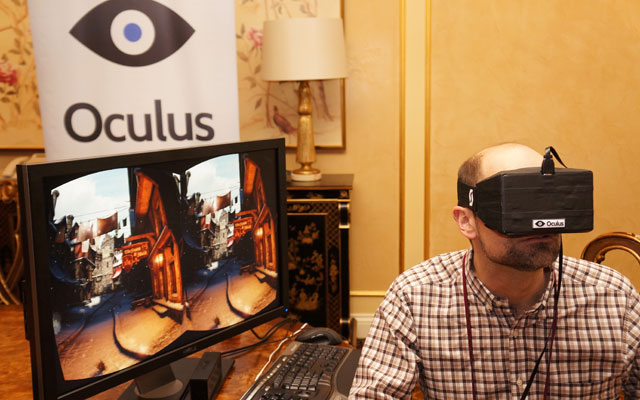The Oculus Rift – Is it any good?
January 28, 2014
I’ve owned a Developer Version of the Rift since my birthday in late November. I had always wanted to do some sort of testing on the Rift, and I would constantly make speeches to my parents about how it would “revolutionize” gaming and, frankly, how awesome it is. They got the message; I was fortunate enough to open up a Version 1.1 Oculus Rift on my birthday. Bless their hearts!
Regardless, the Oculus Rift is a virtual reality head-mounted display that is currently being developed by Oculus VR. Oculus VR began to send out development kits for their gaming peripheral in late spring 2013, a year after a remarkably successful Kickstarter campaign raised nearly $2.5 million
The core objective by the developers of the Oculus Rift is simple: to provide “the first truly virtual reality headset for video games.” However, is this statement true or just another flop for virtual reality? After spending a little over a month doing hours of latency testing and pushing the Rift to its absolute limits (no, really, I almost broke it once), I will say that the Oculus Rift is the greatest virtual reality headset ever created—and that’s remarkable.
The Oculus Rift development kit boasts a 7 inch 1280 x 800 screen divided down the middle for each eye. The screen itself is encapsulated by a sturdy plastic panel that can be extended or retracted depending on your viewing preference. The front chamber of the Rift (where you put your face) is covered with thick foam-like cushion’s to ensure that even the longest playtimes are done comfortably, and trust me, it’s a lifesaver. Lastly, the bulk of the support is done through a three way band that wraps around the upper portion of your head which, as always, can be adjusted.
On the technical side of the Rift, the field of view is more than 90 degrees horizontal, or 110 degrees diagonal. The human eye front facing can see roughly 95 degrees away from the nose, with even more viewing space added by our peripheral vision. The Rift is intended to almost fill the user’s field of view entirely, and from using it hands on, it absolutely achieves this effect.
The entirety of my vision, albeit with the black outline of the chassis visible at the borders of the screen, is completely covered by the display. It’s like when you put your face a few inches away from the television as a child and can see the individual pixels up close. But this is better; much better. This high FOV (field of vision) allows for some truly immersive gameplay. Most notable was my time with the first-person-mech-shooter, Hawken. Without the Rift, Hawken boils down to some fairly exciting and visceral mech to mech combat. You constantly feel like you are inside of this mechanized behemoth with its thunderous stomps and its elaborate cockpit–buttons, trinkets and all. Hawken is an immersive game in its own right, and paired with the Oculus Rift, you get one of the most compelling first person experiences around. You can see the individual bullets flying past your mech, making holes in the sand and outlying buildings. You can see the buildup of dirt and mud at the window of your cockpit. Compounded with this, however, is the ability to freely look around your cockpit hands free. No, seriously, the Rift lets you do that.
With the Oculus Rift comes the standard of head tracking hardware (and software, if you want to get technical). Think of it like the Wii’s motion controls, but the only difference is that it is on your head. The actual head tracking can determine if you are turning your neck, looking up or down, or pivoting your head on one side and translate that motion into the game. The latency, or the time it takes for the action to register on-screen, is so grossly insignificant that even computers have difficulty in determining if it exists. In turn, the feeling of immersion is intensified as your head movements are seamlessly emulated. It’s one of the most mystifying things to be able to look around in a virtual space and feel like you are the one that is looking.
All things said, the Oculus Rift, even in its earliest development stages, is shaping up to be one of the most promising gaming peripherals I’ve ever had the pleasure of using. It’s slick, easy to use, and provides a truly compelling and immersive experience that no other product on the market can match. It’s good; not only that, it is fantastic, and it’s only the beginning.





